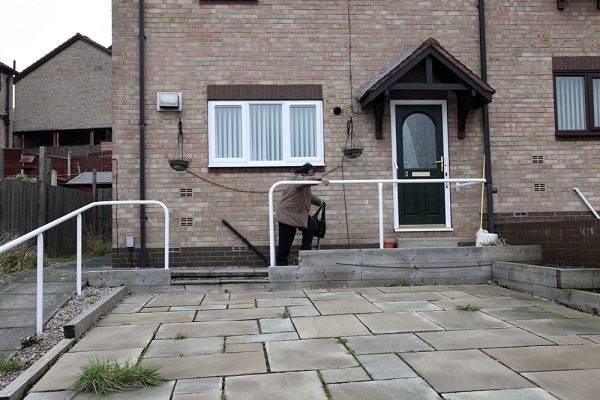Tenants in social or private rented housing: Why is it important?
In England in 2011-12, around one-third (35%) of households were rented1

Credit: JRF/Liz Hingley
On this page:
Nature of the sector
The private rented sector has been growing in recent years, and is at its highest level since the early 1990s, equalling that of the social rented sector at 3.8 million households.
In comparison to social housing, the quality of housing in the private rented sector is more likely to be low. For example, although the overall number of homes that fail to meet Decent Homes standards has fallen, more than twice as many privately-rented homes compared to socially-rented homes did not meet these standards in 2012 (33% compared to 15%). The most common cause of failure was down to poor safety standards associated with Category 1 hazards in the Housing Health and Safety Rating System (HHSRS). The Housing Health and Safety Rating System covers 29 separate hazards, with Category 1 being reserved for any hazard score over a predefined threshold. The list of hazards includes exposure to excess heat and cold but contains no explicit consideration of flooding.2
Tenants’ rights, particularly in the private sector, are poorly regulated. Many schemes are voluntary and regulations on living standards are not as strictly enforced those associated with other basic human rights, such as access to safe food.3
Duties and responsibilities
Local authorities have statutory duties and responsibilities which are relevant for action on climate impacts and extreme weather and ensuring decent homes for tenants. The context for Wales and Scotland with respect to flooding is included in our Why climate justice matters presentation, where relevant. For England, duties and responsibilities are set out in:
- The Flood and Water Management Act (2010) which gives powers to local authorities to work with a range of stakeholders and the wider public in developing flood risk strategies.
- The Housing Act (2004) sets up the Housing Health and Safety Rating System (England)Regulations 2005 (SI 2005 No 3208) through which hazards can be identified and minimized within rental accommodation. The application of the system is taken from the perspective of aspects of tenant vulnerability, such as their age. The system does not provide a set of standards. However, information from the system can be used with powers given to local authorities through Part 1 of the Act to require action to remedy potential hazards.4
- Building Standards and Regulations-5 the work of the Building Regulations Advisory Committee 6 can help to inform about proposed changes to regulations in this area.
References
- DCLG (2013) English Housing Survey 2011-12. Office for National Statistics
- DCLG (2006) Housing Health and Safety Rating System Guidance for Landlords and Property Related Professionals
- Written evidence to House of Commons Communities & Local Government Committee by Housing for the 99%, 2013
- DCLG (2006) Housing Health and Safety Rating System Guidance for Landlords and Property Related Professionals
- DCLG Planning Portal The Building Regulations
- Building Regulations Advisory Committtee

Built by:

© 2014 - Climate Just
Contact us
